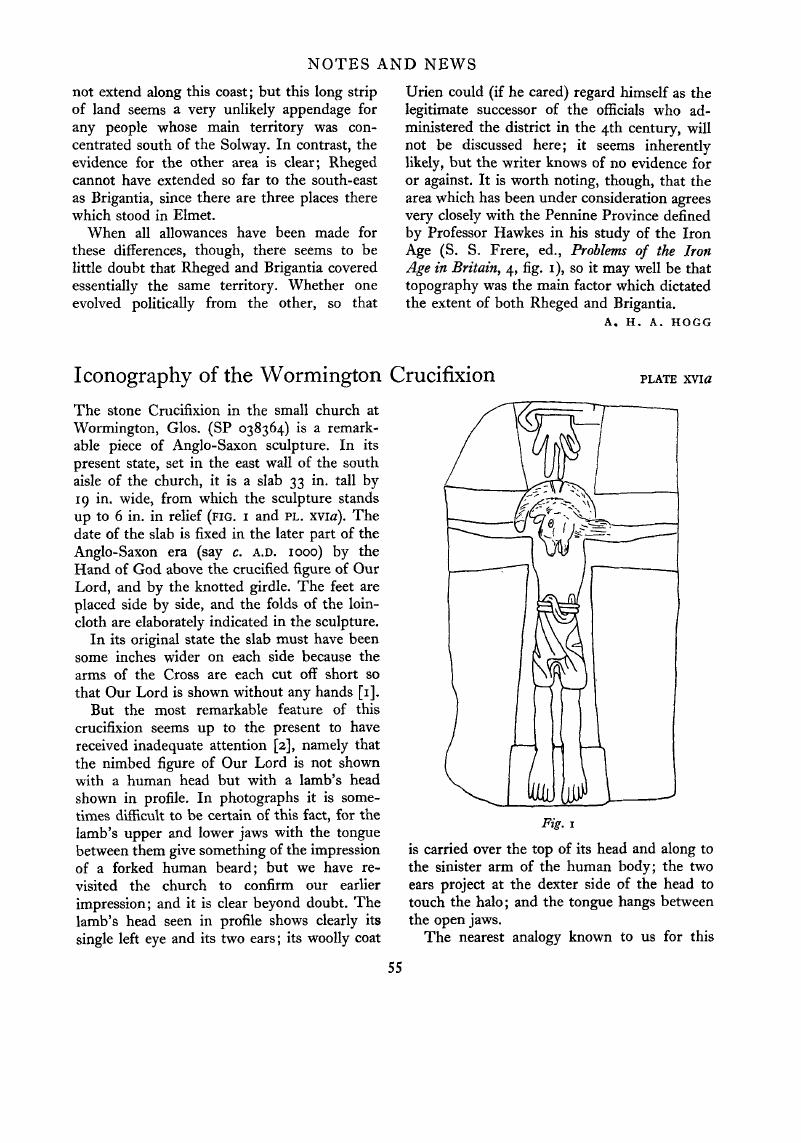Article contents
Iconography of the Wormington Crucifixion
Published online by Cambridge University Press: 26 May 2015
Abstract

- Type
- Notes and News
- Information
- Copyright
- Copyright © Antiquity Publications Ltd 1965
References
[1] Talbot Rice, D., Englisk Art A.D. 971–1100 (Oxford, 1952), 99 and p. 11bGoogle Scholar. Talbot Rice refers to ‘the severely contorted head’.
[2] The only reference I have been able to find to this remarkable feature is in Hunt’s, J. E.Bnglish and Welsk Crucifixes, 670–1550 (London, 1956), 18Google Scholar. Mr Hunt also records that the stone was discovered as recently as 1936 buried in the grounds of Wormington Grange.
[3] Clapham, A. W., English Romanesque Architecture before the Conquest (Oxford, 1930), pl. 22Google Scholar.
[4] E.g. the Ilkley cross-shaft, Clapham, loc. cit., fig. 17.
- 1
- Cited by


